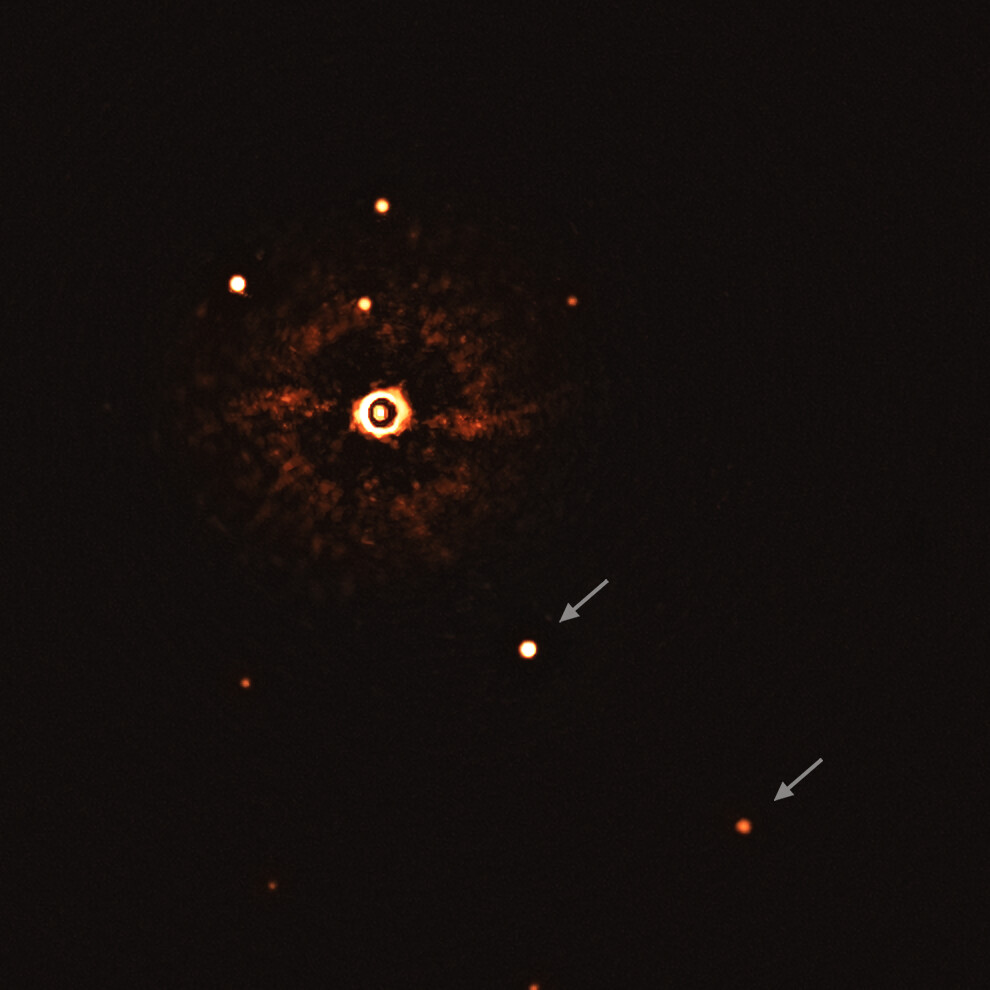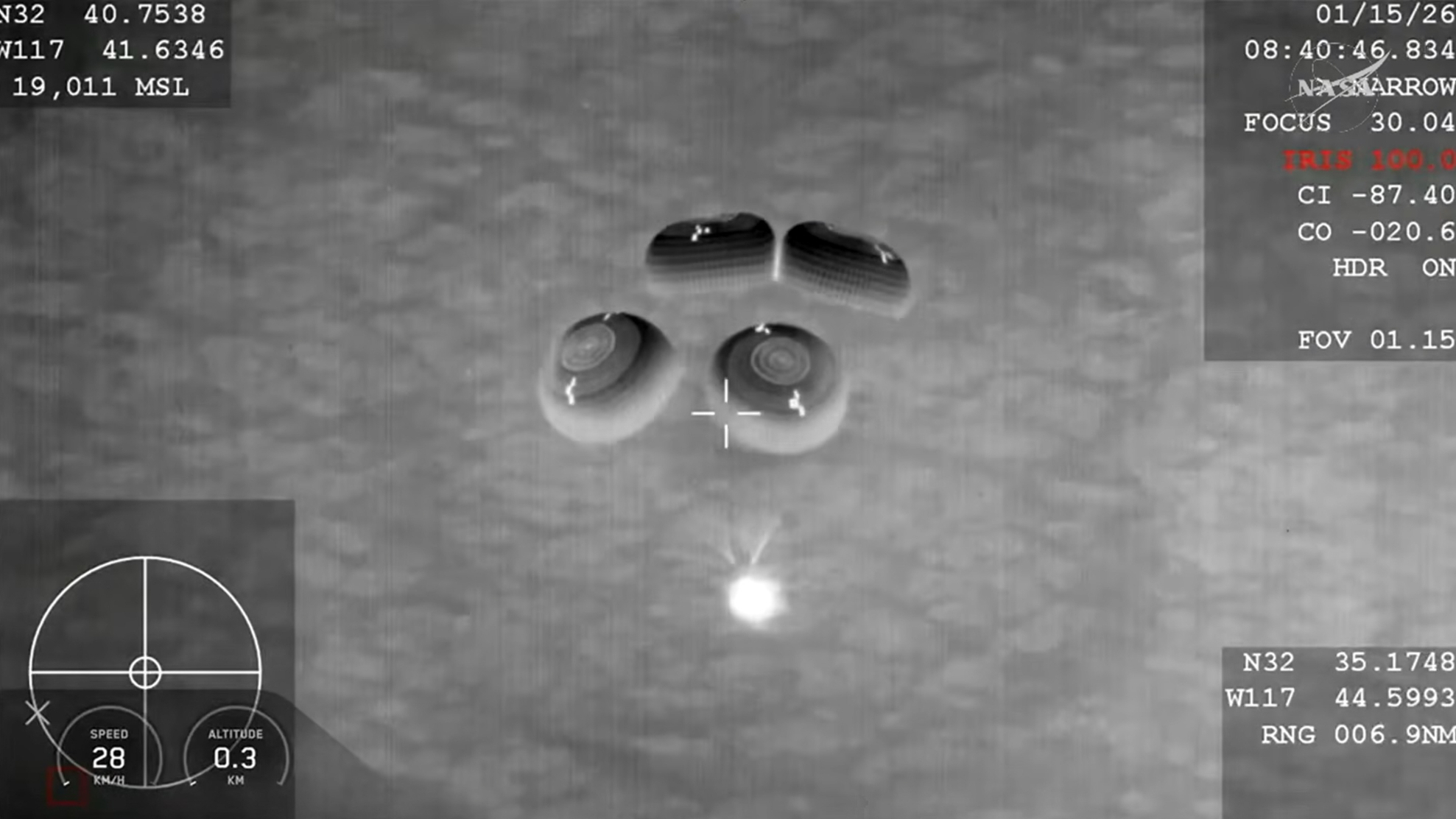Multiplanet system around sunlike star photographed for 1st time ever
For the first time ever, astronomers have directly imaged multiple planets orbiting a sunlike star.
The European Southern Observatory's Very Large Telescope (VLT) in Chile photographed two giant planets circling TYC 8998-760-1, a very young analogue of our own sun that lies about 300 light-years from Earth, a new study reports.
"This discovery is a snapshot of an environment that is very similar to our solar system, but at a much earlier stage of its evolution," study lead author Alexander Bohn, a doctoral student at Leiden University in the Netherlands, said in a statement.
Related: The strangest alien planets (gallery)

Before this historic cosmic portrait, only two multiplanet systems had ever been directly imaged, and neither of them features a sunlike star, study team members said. And snapping a photo of even a single exoplanet remains a rare achievement.
"Even though astronomers have indirectly detected thousands of planets in our galaxy, only a tiny fraction of these exoplanets have been directly imaged," study co-author Matthew Kenworthy, an associate professor at Leiden University, said in the same statement.
Bohn, Kenworthy and their colleagues studied the 17-million-year-old star TYC 8998-760-1 with the VLT's Spectro-Polarimetric High-contrast Exoplanet Research instrument, or SPHERE for short. SPHERE uses a device called a coronagraph to block a star's blinding light, allowing astronomers to see and study orbiting planets that would otherwise be lost in the glare.
Breaking space news, the latest updates on rocket launches, skywatching events and more!
The newly reported SPHERE imagery revealed two planets in the system, TYC 8998-760-1b and TYC 8998-760-1c. Astronomers already knew about TYC 8998-760-1b — a team led by Bohn announced its discovery late last year — but TYC 8998-760-1c is a newfound world.
The two planets are huge and farflung. TYC 8998-760-1b is about 14 times more massive than Jupiter and orbits at an average distance of 160 astronomical units (AU), and TYC 8998-760-1c is six times heftier than Jupiter and lies about 320 AU from the host star. (One AU is the average Earth-sun distance — about 93 million miles, or 150 million kilometers. For comparison: Jupiter and Saturn orbit our sun at just 5 AU and 10 AU, respectively.)
It's unclear whether the two worlds in TYC 8998-760-1 formed at their present locations or were pushed out there somehow. Further observations, including those made by huge future observatories such as the European Extremely Large Telescope (ELT), could help to solve that mystery, study team members said.
Other questions remain about the TYC 8998-760-1 system as well. For example, do the two gas giants have company? Might several rocky planets circle relatively close to the star, as they do in our solar system?
"The possibility that future instruments, such as those available on the ELT, will be able to detect even lower-mass planets around this star marks an important milestone in understanding multiplanet systems, with potential implications for the history of our own solar system," Bohn said.
The new study was published online today (July 22) in The Astrophysical Journal Letters.
Mike Wall is the author of "Out There" (Grand Central Publishing, 2018; illustrated by Karl Tate), a book about the search for alien life. Follow him on Twitter @michaeldwall. Follow us on Twitter @Spacedotcom or Facebook.

Michael Wall is a Senior Space Writer with Space.com and joined the team in 2010. He primarily covers exoplanets, spaceflight and military space, but has been known to dabble in the space art beat. His book about the search for alien life, "Out There," was published on Nov. 13, 2018. Before becoming a science writer, Michael worked as a herpetologist and wildlife biologist. He has a Ph.D. in evolutionary biology from the University of Sydney, Australia, a bachelor's degree from the University of Arizona, and a graduate certificate in science writing from the University of California, Santa Cruz. To find out what his latest project is, you can follow Michael on Twitter.
